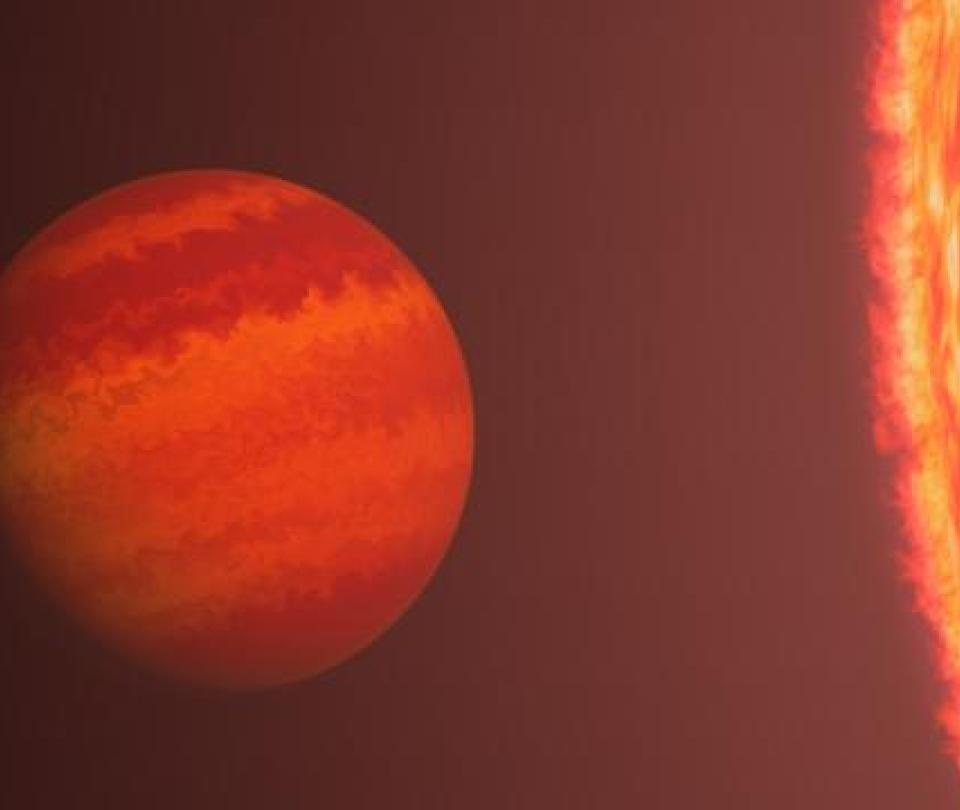Scientists have discovered a new planet beyond the solar system, Phoenix that preserves its atmosphere despite the extreme radiation it receives from a nearby star, a finding that questions current theories about how planets age and die in extreme environments.
(See here: What the Crosby-Schøyen codex is about, a book that sold for more than $15.6 billion)
In a study published this Wednesday in the magazine The Astronomical Journal Researchers maintain that this exoplanet “it should have been reduced to bare rock by the star’s intense radiation and yet it is smaller, older and hotter” than they thought possible.
Nicknamed ‘Phoenix’ by researchers, for its ability to survive the radiant energy of the red giant star, the exoplanet has developed an unusual fluffy atmosphere.
“This planet is not evolving as we thought, since it shows a much larger and less dense atmosphere than we believed for the extreme conditions to which it is subject”, says one of the authors Sam Grunblatt, an astrophysicist at the American University of Johns Hopkins. , in a statement from the center.
The new planet belongs to a category of uncommon worlds called ‘Hot Neptunes’ because they share many similarities with the solar system’s outermost giant icy planet, despite being much closer to their host stars and much warmer.
(Follow here: The Earth completes 12 consecutive months breaking heat records)
‘Phoenix’ It is 6.2 times larger than Earth, completes an orbit around its parent star every 4.2 days and is about 6 times closer to its star than Mercury is to the Sun.
Scientists estimate that this exoplanet is 60 times less dense than the ‘Hot Neptune’ largest mass discovered to date, and which will not survive more than 100 million years before starting to die spiraling towards its giant star.
“It’s the smallest planet we’ve found around one of these giant red stars, and probably the lowest mass orbiting the host star we’ve ever seen, which is why it looks so strange,” Grunblatt points out.
“We don’t know why it still has an atmosphere when other much smaller and denser ‘hot Neptunes’ lose them in much less extreme environments,” Add.
The end of the life of the stars.
Exoplanets like ‘Phoenix’ They are not discovered as frequently because their small size makes them more difficult to detect compared to larger and denser ones; In this case the discovery has been possible thanks to the new method to fit the data of the NASA satellite observation of exoplanets.
(See here: The temperature rises: places in the world most affected by heat… there is one in Colombia)
In the authors’ opinion, ‘Phoenix’ illustrates the enormous diversity of solar systems and the complexity of planetary evolution, especially at the end of the lives of stars.
“We don’t understand the late evolution of planetary systems very well. This tells us that Earth’s atmosphere may not evolve exactly as we thought,” Grunblatt points out.
For now, scientists predict that in a few kilometers of millions of years the Sun will expand until it becomes a giant red star that will swell and engulf the Earth and the other inner planets, but discover how this could challenge this theory.
EFE
















Add Comment